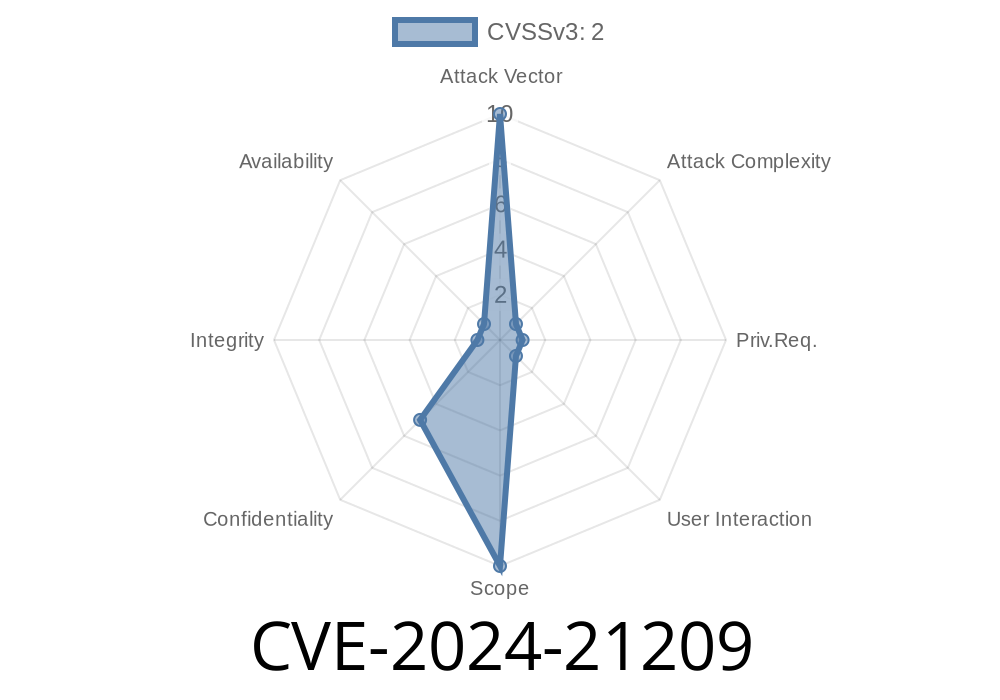A newly discovered vulnerability (CVE-2024-21209) in the MySQL Client product of Oracle MySQL has been reported, specifically targeting the 'mysqldump' component. Supported versions that are affected by this vulnerability are 8.4.2 and prior, as well as 9..1 and prior. Exploiting this vulnerability has been deemed difficult, requiring both a high-privileged attacker with network access via multiple protocols and human interaction from someone other than the attacker. Successful exploitation of this vulnerability can potentially lead to unauthorized read access to a subset of MySQL Client accessible data.
Exploit Details
Given the nature of this vulnerability, an attacker with high privileges who has network access via multiple protocols can compromise the MySQL Client's mysqldump component. According to the CVSS 3.1 Base Score, this vulnerability has a base score of 2., considering confidentiality impacts only. The CVSS Vector is represented as: (CVSS:3.1/AV:N/AC:H/PR:H/UI:R/S:U/C:L/I:N/A:N).
Code Snippet
The issue lies in the MySQL Client's mysqldump component. While there hasn't been any public exploit code released yet, one can assume that the attacker might target the components responsible for creating and handling dump files.
An example of how a normal mysqldump operation is performed
$ mysqldump -u root -p --databases testdb > backup.sql
To mitigate this vulnerability, users are encouraged to upgrade to the latest version of MySQL Client and follow the best security practices provided by Oracle.
Original References
For more information on the vulnerability and its technical aspects, please refer to the following original sources:
1. Oracle Security Alert Advisory: https://%20www.oracle.com/security-alerts/CVE-2024-21209
2. NVD - National Vulnerability Database: https://nvd.nist.gov/vuln/detail/CVE-2024-21209
Conclusion
CVE-2024-21209 is a vulnerability in the MySQL Client product of Oracle MySQL, specifically affecting the mysqldump component. The exploit is considered difficult to perform and requires a high-privileged attacker and human interaction. Successful attacks may result in unauthorized read access to a subset of MySQL Client accessible data. It is crucial for users to follow best security practices and upgrade their MySQL Client versions to the latest releases to mitigate the risk of this vulnerability.
Timeline
Published on: 10/15/2024 20:15:09 UTC
Last modified on: 11/21/2024 08:53:58 UTC
